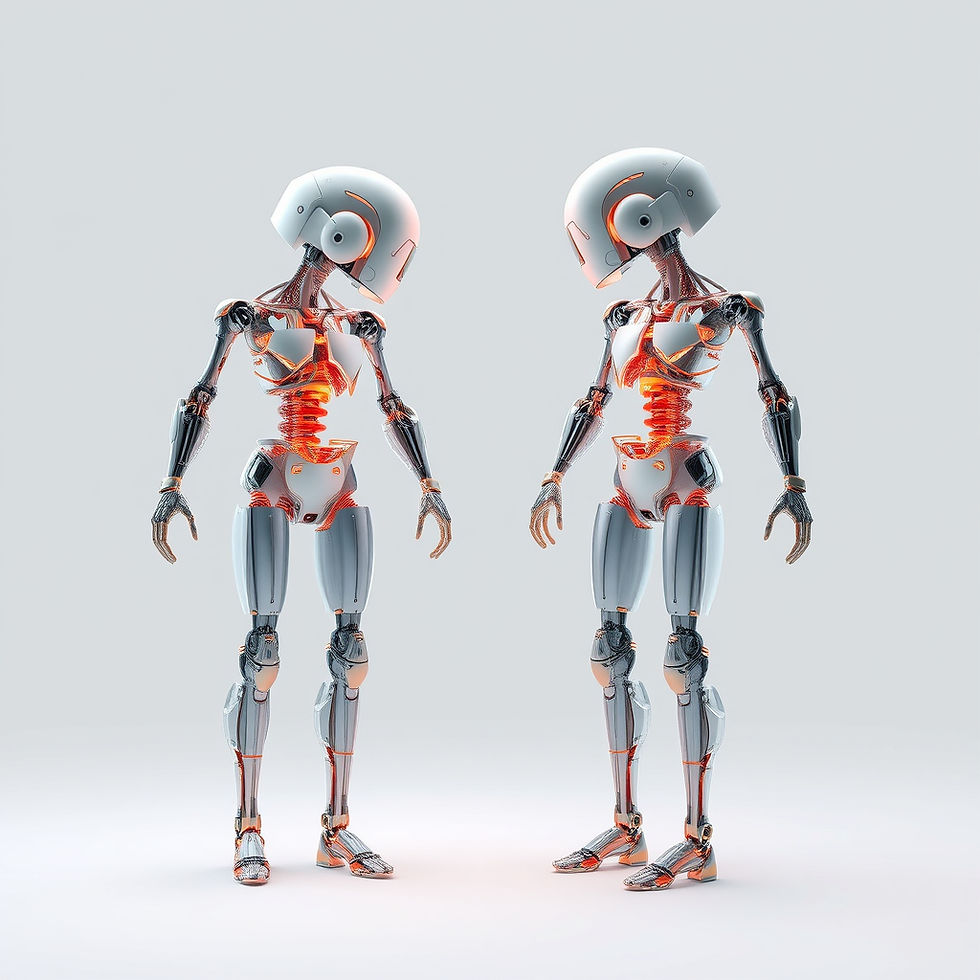Digital Twins in Simulation: Bridging Real and Virtual Worlds
- Geniuscrate

- Aug 3
- 4 min read

Imagine a training environment where you can interact with a fully functioning virtual replica of an aircraft engine, a tank, or even a whole power grid, and one that behaves exactly like its real-world counterpart. No downtime. No risk. No guesswork.
This is the power of digital twin technology in modern simulation-based training. It’s not just a trend, it’s a complete transformation of how we learn, plan, and prepare.
What Exactly Is a Digital Twin?
A digital twin is a real-time, data-driven digital replica of a physical object, process, or system. It continuously mirrors its real-world counterpart through constant updates from sensors, IoT devices, or operational data.
But in simulation contexts, a digital twin does more than just mirror physical reality, but it becomes an interactive, predictive, and adaptive training platform.
Unlike a static 3D model, a true digital twin:
Responds dynamically to simulated actions
Updates itself based on real-time or historical data
Predicts outcomes under varying conditions
Integrates with simulation engines for high-fidelity training
In other words, it’s a living, learning model, and one of the most powerful assets for advanced simulation and decision-making.
Why Digital Twins Are Changing the Simulation Landscape
Traditional simulations rely on approximations. Digital twins use reality itself.
By feeding actual system data into a virtual environment, digital twins elevate simulations from passive environments to data-rich ecosystems that:
Replicate operational behavior with accuracy
Update in real time as real-world conditions change
Allow for high-risk scenarios without real-world consequences
Provide deep insights into performance and failure points
Whether for training operators or testing new workflows, digital twin simulations reduce cost, improve safety, and unlock decision-making at scale.
Real-World Applications of Digital Twin Simulation
1. Defense and Military Training
Create digital replicas of vehicles, weapons systems, and terrain. Trainees can rehearse complex missions, vehicle maintenance, or weapons handling, and all within a real-time replica of the actual system they’ll use in the field.
2. Aerospace Engineering
Simulate flight control systems, jet engines, and environmental systems. Train pilots or ground engineers to troubleshoot real issues using a live-updated engine twin.
3. Energy and Utilities
Operate a virtual power plant. Simulate blackouts, failures, and extreme demand scenarios, but without affecting the real grid.
4. Industrial Manufacturing
Run maintenance, inspection, or assembly-line training using virtual twins of machinery. Adapt the simulation as the physical plant evolves.
Key Benefits for Training Simulations
Hyper-Realistic Interaction
Digital twins replicate system behavior down to the component level, enabling a new level of procedural and technical realism in training.
Live Operational Feedback
Real-world data streams into the simulation, allowing instant scenario updates or failure mode testing.
Predictive Learning
By running “what-if” scenarios, trainees and decision-makers can explore consequences before they happen.
Remote and Scalable Access
Trainees across the world can access the same digital twin, which helps in reducing equipment dependence and increasing training accessibility.
Lower Training Costs
Minimize use of physical assets for training while extending the lifespan of critical systems.
How GeniusCrate Builds Digital Twin Simulations
At GeniusCrate, we combine engineering precision with visual immersion to build custom digital twins tailored to your operational needs.
Our process includes:
3D Modeling & System Mapping: Using tools like Blender, Maya, and CAD integration, we craft visually accurate and functionally detailed replicas.
Simulation Engine Integration: Powered by Unreal Engine and Unity, we make your twin interactive, immersive, and multi-platform ready.
Live Data Integration: Through APIs, sensor inputs, or database connections, we link your simulation to real-world systems using IoT pipelines.
Behavioral Logic & Predictive AI: We embed logic, wear models, and AI feedback loops that evolve with usage, letting your twin become smarter over time.
Whether it's a battlefield, a cockpit, or a manufacturing line, we make sure your simulation mirrors reality, and prepares you for it.
Digital Twins vs Traditional Simulations
Feature | Traditional Simulation | Digital Twin |
Data Updates | Manual or Pre-set | Real-time, dynamic |
Fidelity | Moderate | High (visual + behavioral) |
Adaptability | Limited | Scalable and evolving |
Predictive Capabilities | Rare | Core function |
Cost Efficiency | Decent | Long-term ROI significantly higher |
A Look at the Future: Where Digital Twins Are Going
As AI, edge computing, and cloud platforms evolve, digital twins will become faster, smarter, and more autonomous. Expect to see:
Multi-scale twins of entire bases, factories, or cities
Self-correcting simulations based on real-world anomalies
AI coaching agents embedded into the twin
Cross-device accessibility (VR, AR, desktop, mobile)
In short, the simulation will never stop evolving, and it will always stay in sync with the world it's built to reflect.
Conclusion: Training That Mirrors Reality
Digital twin technology is not just an upgrade, but it’s a paradigm shift in how simulation works. At GeniusCrate, we help you harness that shift by crafting twins that deliver immersion, accuracy, and insight.
If your training simulations aren't dynamic, data-driven, and future-ready, they’re already outdated. Let us help you build training environments that evolve with your world.



Comments